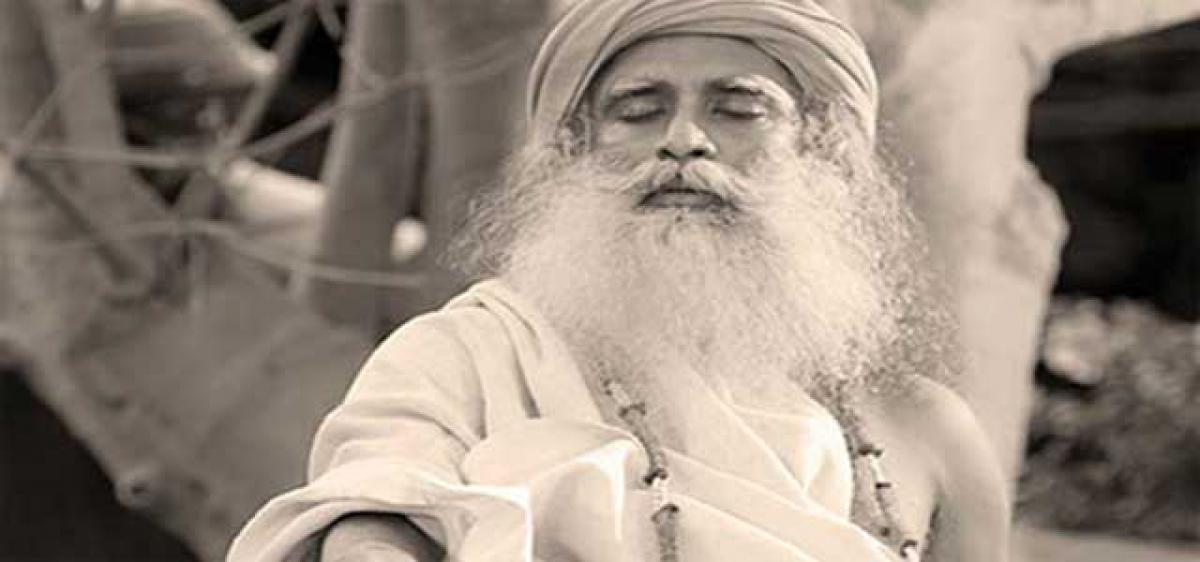Live
- BCCI releases dates for IPL 2025 to 2027
- Centre releases Rs 448 crore as grant for rural local bodies in Karnataka
- India and Japan bolster defence ties, explore air domain cooperation
- Masik Shivratri 2024: Date, Time, Rituals, and Significance
- 8 of 10 Indian stockbrokers to increase IT budgets for emerging tech adoption
- Utpanna Ekadashi 2024: Date, Rituals, and Significance
- New Criminal Laws: An Era of Transformation of the Criminal Justice System
- India among top 10 countries with AI readiness: Report
- UNICEF to support Kerala's children with special needs
- Meta purges over 2 million accounts linked to scam centres
Just In

According to the yogic tradition, Shiva is not seen as a god, but as the Adiyogi or first Yogi and Adi Guru or the first Guru. He transmitted the yogic sciences to his seven disciples – the Saptarishis – on the banks of Kantisarovar, the lake that is a few kilometers above Kedarnath in the Himalayas.
Who was the first person to be truly aware? In terms of human consciousness, what was the situation in the world when he appeared?
According to the yogic tradition, Shiva is not seen as a god, but as the Adiyogi or first Yogi and Adi Guru or the first Guru. He transmitted the yogic sciences to his seven disciples – the Saptarishis – on the banks of Kantisarovar, the lake that is a few kilometers above Kedarnath in the Himalayas.
This was the first yoga program. Some people say this happened 60,000 years ago, others say 30 or 35,000 years ago, but we are quite sure it is at least 15,000 years ago.
Was there no one who was ever aware before Adiyogi? I am sure there would have been someone who was aware.
However, awareness is one thing, knowing is another thing, and an organised system of how to know is a completely different thing.
Adiyogi is significant not just because he attained, but because he made the possibility available to everyone through the methods he created.
He made it possible to approach the ultimate nature of who you are in a scientific manner, clearly exploring different dimensions so it became an organised process – a shastra or a science for inner wellbeing.
He gave 112 fundamental ways, and from that, many permutations and combinations have evolved today. No one, either before or after, has spoken with the same elaborateness and clarity. We value him for that.
What was the situation when Adiyogi appeared? In the yogic lore, except when he is sitting down, Adiyogi is known to have a “ready for action” kind of look about him. He is described as carrying a weapon, and that describes the nature of the society of the day.
If you look back at the time when he appeared, people obviously lived in a clearly segregated manner with tribes and ethnic identities. There is little we know about the actual situation, but we know how the human psyche is.
We can conjecture that if people are placed in a certain kind of situation, this is how they will behave. The survival instinct would have been strong in those times.
It would have been natural that when people crossed lines, it would lead to death. Obviously there was physical violence, and Adiyogi adjusted himself to that situation. As much as he was a yogi who sat still, he was also a fighting man.
But though the survival instinct was strong, somewhere in the culture, the longing to seek must have been infused into people. When he first appeared, many people – including the seven we refer to today as the Saptarishis – gathered out of interest.
If there was no history of any kind of knowing, they would not have gathered. There definitely must have been some seeking for them to even say, “You seem to know something that we do not know.”
The longing to reach one’s ultimate nature did not find expression in most parts of the world, but in this culture it did.
I feel that the society of the time must have been a stable society, where over a period of time, people matured and understood that the instinct of survival does not fulfill us – we need to empower the other dimension within us that is always longing to become infinite and expand in an unbounded way.
We don’t know on what scale, but that realisation definitely must have come. People didn’t gather around him out of fear, they gathered thinking he had something to offer. That means in some way, they were conscious that there was a higher possibility there.

© 2024 Hyderabad Media House Limited/The Hans India. All rights reserved. Powered by hocalwire.com







